The Pyramid dress pattern I ordered from center for pattern design because I was intrigued by the designs from the UK designer Julian Roberts.You can see him at work by watching 2 videos.

The pattern is made by Sandra Ericson and based upon the principles of Julian Roberts system of Subtraction Cutting.
I was interested to see how this pattern was drafted and to see how this design looked like in real which I could not really judge by the pattern design picture.
The pattern is partly drafted ( bodice part) you only need to draw the skirt portion which is a large circle around the pattern depending on the length you prefer.

Because this pattern needs one XL piece of fabric I tried this pattern by making it at ½ scale for my dress model so I had no piecing to do. I measured the pattern and draw a 1/2-scale pattern from it.
As you can see there are no seams in the skirt portion of the dress.It looks like a doughnut shape.
Pattern layout 1/2 scale size 12

The fabric I needed was 1.20 meter by 1.20 meter (1.312 x 1.312 yard) for my ½ scale pattern .So in other words if I would make this dress in a real size I need about 2.40 m by 2.40 m (2.624x 2.624 yard) that’s why you need to piece the fabric to get that wide.
Suggested bias fabrics: Loosely woven wools, silks or cotton; wool or silk crepe, crepe backed satin, silk velvet, georgette or chiffon.
I used stretch polyester satin for this unusual funky dress, and because it is only for showing on my scale dressmodel I did not finished the seams just use my pinking shear.
The instructions mention to sew stay tape at the shoulder seams to prevent stretching,I fused some pieces of fusible interfacing at the sharp angles at the partly side seams, and finished the armholes and neckline with binding finished wide 2 mm wide (0.078 inch) from bias cut self-fabric.
I stitched the bias cut strip of fabric right sides together at armhole and neckline and pressed the seams towards the bias cut piece, I folded the bias cut fabric around the seam allowance and hand stitched the piping in the ditch from the right side. Sewing it by hand gave me more control because of the small scale than using the sewing machine. Now there was no need to pin or baste first.

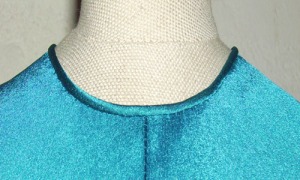
There was no need to leave an opening at center front because my ½ scale dress model has no head.But for a real size dress you need to leave an opening at the center back seam for 12,5 cm ( 5 inches)
The hem is uneven after sewing the dress and due to the bias cut I left it un hemmed for a few days.But you also can leave it as irregulare level but I choose for an even hem.



I marked the hemline with chalk using my lead measuring tape.

The hem wide is very wide 5.88 meter (nearly 6 ½ yard) at ½ scale and I finished it by just turning in and stitched from the wrong side a few hairlines away from the fold.This way it looks neat on the dress model but for a real size dress it is not a good way because the raffles are still there.
Inside view hem wide

Back view
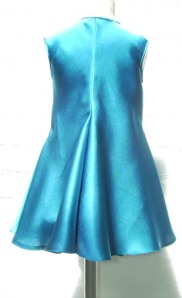
 Front view
Front view
If you want a unique funky dress this is the one that you should make.
The sewing is easy, the pattern is printed on sturdy paper and the instructions are clear there are even some variations like using the side flaps to use as pockets.
PS. I am not planning to make this dress in my size, I only made it out of curiosity.
The cover dress picture has the folds at center front sewn differently, this is described in the pattern as variations on the theme.I folded the 4 corners flat at all the sides to achieve a more slimming view.
At the next pictures you can see the corners or cowls at the center, left, right and back of the dress.
inside side of the dress:

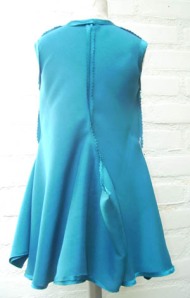





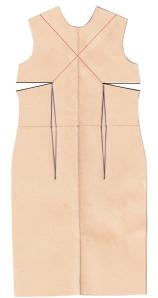

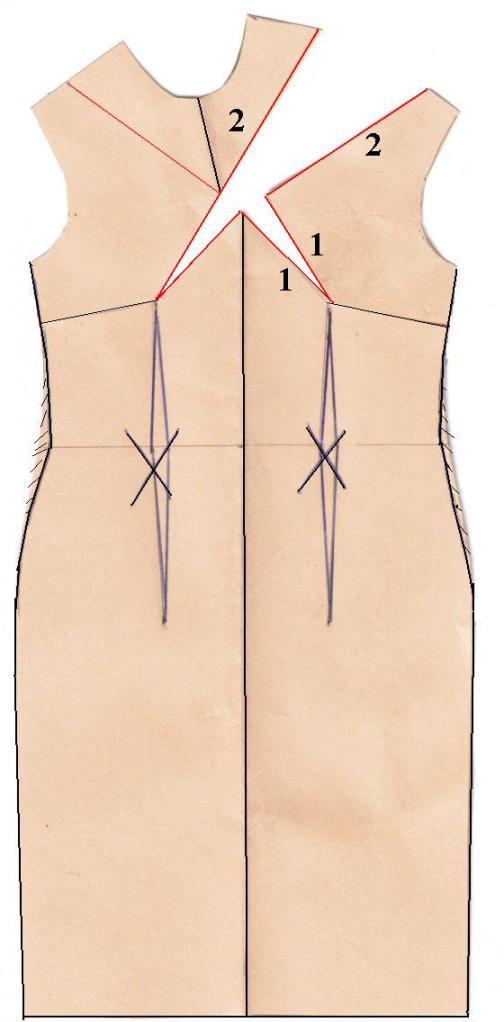
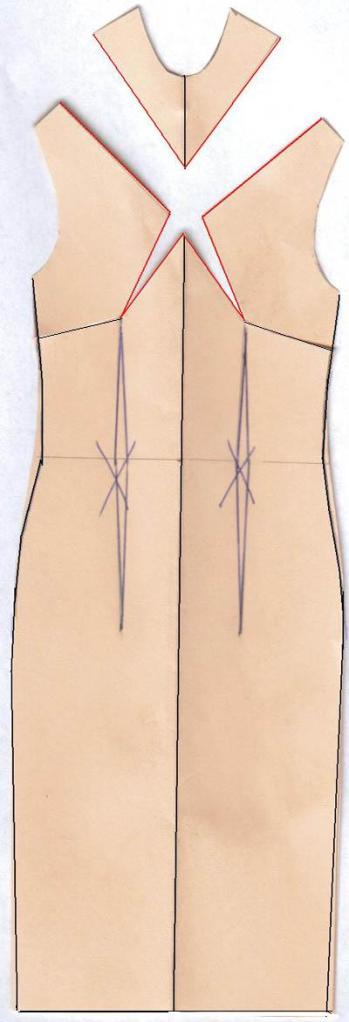

 Subscribe with Bloglines
Subscribe with Bloglines